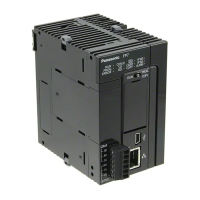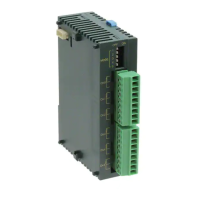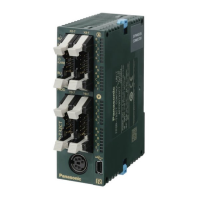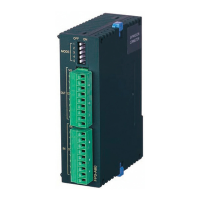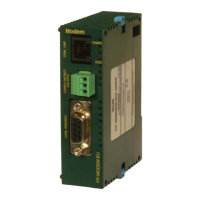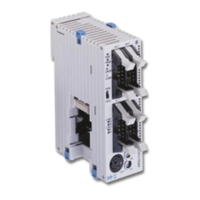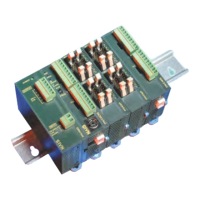Example 15) Converting two decimal ASCII data (7 digits) to two 32-bit BCD data
The conversion starts from the low byte of DT0. It is converted in reverse direction (the low
word side of [S2] is considered as high-order numerical data). For empty digits of the storage
area, zeros (0) are inserted.
33H 31 1
H 3534
5 4
3 2
7 6
0 0
0 0
2 1
H 3736
H 3030
H 3332
H 3231
H 3030
DT0
DT1
DT2
DT3
(characters)
[S2]…DT0
[D]…DT100
[S2]
DT4
[i]…UL
[S1]…"%7b"
[N]…H
DT5
Converts decimal ASCII data (7-digit) to 32-bit BCD data
① ASCII data (reverse direction)
:
:
00020001
② Conversion starting position (0) → [S2]+0 byte
② Conversion starting position = +0 byte
③ Amount of data to be converted = 2
DT0 to DT3: "0000123" → DT100 to DT101: H 0000 0123
DT3 to DT6: "1234567" → DT102 to DT103: H 0123 4567
DT6
DT100
[D]
DT101
DT102
DT103
DT104
H 0000
H 4567
H 01234567
H 00000123
H 0123
H 0123
* When the number of characters is smaller than
the number of converted bits, the portions that are
lacking are padded with “0”.
3
③ Amount of conversion data (2) → two 7-digit data
Example 16) Converting two floating point ASCII data (10 digits) to two 32-bit single-
precision real number data
The conversion starts from the high byte of DT0. It is converted in reverse direction (the low
word side of [S2] is considered as high-order numerical data).
14.11 ATOB (Conversion: ASCII → BIN)
WUME-FP7CPUPGR-12 14-57
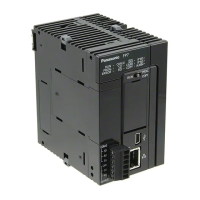
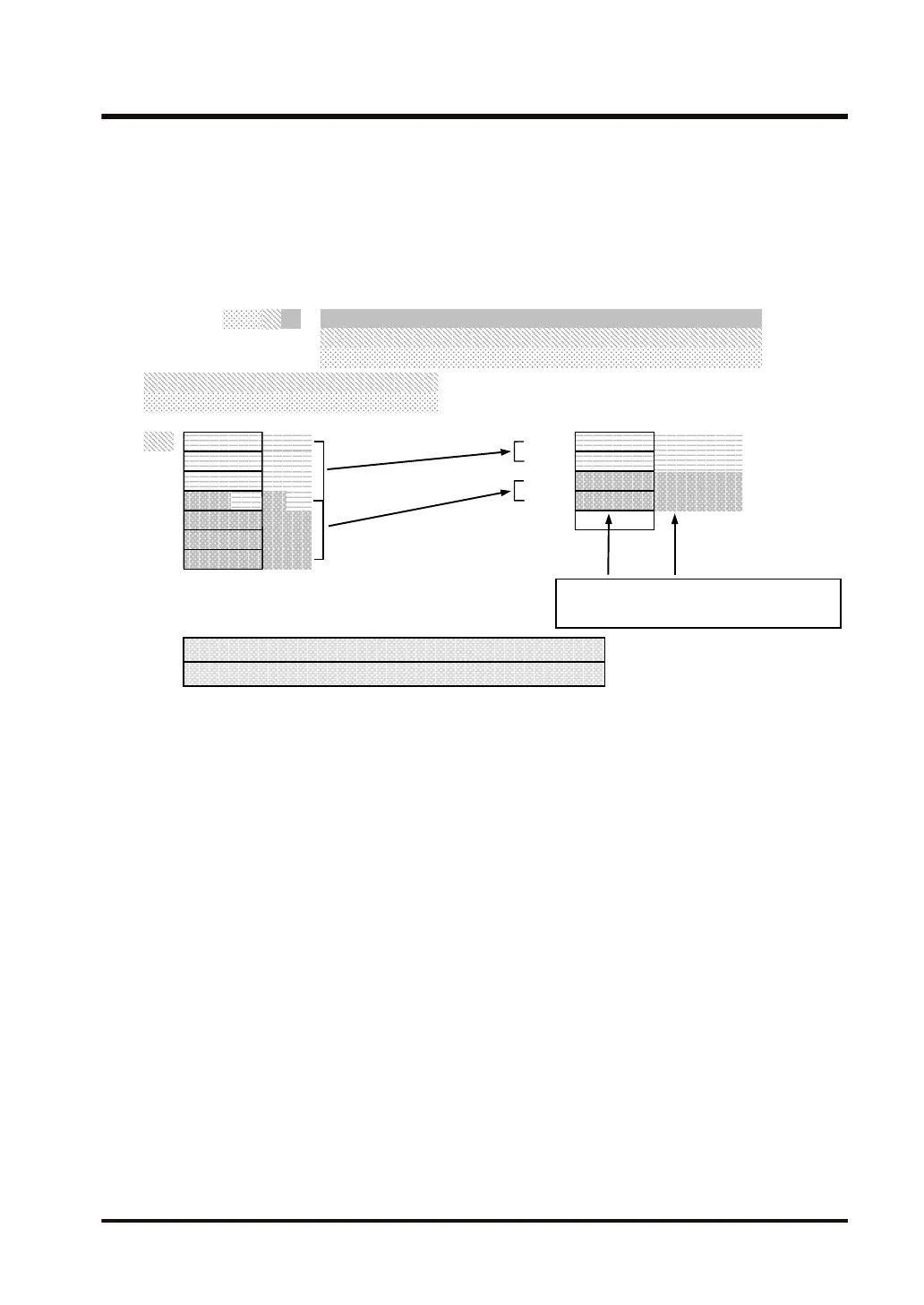